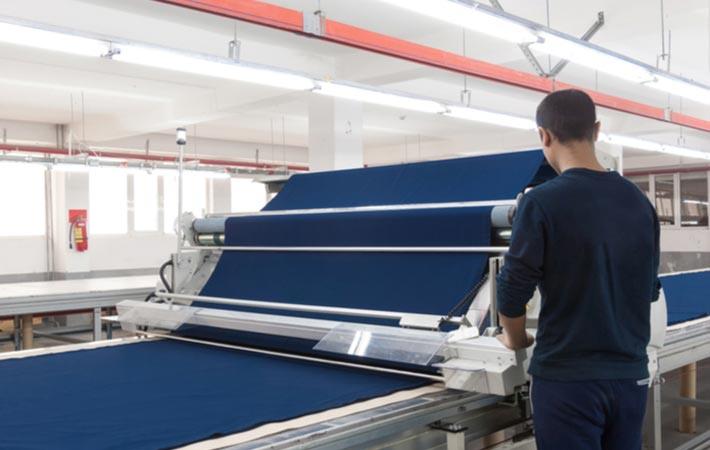Interviews
Textile among 26 sectors to get relief, RBI panel suggests
08 Sep '20
2 min read

Pic: Shutterstock
The Reserve Bank of India (RBI) yesterday said it has broadly accepted the recommendations of the five-member expert committee headed by banker K V Kamath that identified 26 sectors affected by the COVID-19 crisis and prescribed six key ratios within which the resolution plan has to be finalised. Textiles and retail and wholesale trade are among sectors identified for relief.
For sectors not mentioned, the ratios can be decided by the individual bank. These ratios essentially determine how much debt a company can build up in relation to its capital and income.
The panel tabled its report on September 4 wherein it has suggested financial parameters that include aspects related to leverage, liquidity and debt serviceability, RBI said.
The 26 sectors selected by the panel for the resolution framework are: Power, construction, iron and steel manufacturing, roads, real estate, trading wholesale, textiles, chemicals, consumer durables (FMCG), non-ferrous metals, pharma, logistcis, gems and jewellery, cement, auto components, hotels, mining, plastic products manufacturing, automobile manufacturing, auto dealership, aviation, sugar, port and port services, shipping, building materials, and corporate retail outlets.
Textiles, engineering and retail and wholesale trade, which were repaying loans before the COVID-19 crisis, can look forward to easier terms of repayment while non-banking finance corporations (NBFCs), power, steel and real estate businesses that were struggling even before the crisis may have to face the pain of recovery action.
Considering the large volume and the fact that only standard assets are eligible under the proposed scheme, a segmented approach of bucketing these accounts under mild, moderate and severe stress may ensure a quick turnaround. To complete this task, simplified restructuring for mild and moderate stress may be prescribed. Severe stress cases would require comprehensive restructuring, the panel recommended.
All sectors must have a debt service coverage ratio equal to or more than 1 and all banks are required to have a current ratio of at least 1. This means that the company’s debt due in a year or less are on a par with their assets.
The only exception is aviation, where a ratio of 0.4 has been allowed, because airlines follow the cash and-carry model for revenue purpose, thereby creating almost nil debtors and higher current liabilities in form of advance received from customers. Also, airlines enjoy 6-9 months of credit from vendors.
For sectors not mentioned, the ratios can be decided by the individual bank. These ratios essentially determine how much debt a company can build up in relation to its capital and income.
The panel tabled its report on September 4 wherein it has suggested financial parameters that include aspects related to leverage, liquidity and debt serviceability, RBI said.
The 26 sectors selected by the panel for the resolution framework are: Power, construction, iron and steel manufacturing, roads, real estate, trading wholesale, textiles, chemicals, consumer durables (FMCG), non-ferrous metals, pharma, logistcis, gems and jewellery, cement, auto components, hotels, mining, plastic products manufacturing, automobile manufacturing, auto dealership, aviation, sugar, port and port services, shipping, building materials, and corporate retail outlets.
Textiles, engineering and retail and wholesale trade, which were repaying loans before the COVID-19 crisis, can look forward to easier terms of repayment while non-banking finance corporations (NBFCs), power, steel and real estate businesses that were struggling even before the crisis may have to face the pain of recovery action.
Considering the large volume and the fact that only standard assets are eligible under the proposed scheme, a segmented approach of bucketing these accounts under mild, moderate and severe stress may ensure a quick turnaround. To complete this task, simplified restructuring for mild and moderate stress may be prescribed. Severe stress cases would require comprehensive restructuring, the panel recommended.
All sectors must have a debt service coverage ratio equal to or more than 1 and all banks are required to have a current ratio of at least 1. This means that the company’s debt due in a year or less are on a par with their assets.
The only exception is aviation, where a ratio of 0.4 has been allowed, because airlines follow the cash and-carry model for revenue purpose, thereby creating almost nil debtors and higher current liabilities in form of advance received from customers. Also, airlines enjoy 6-9 months of credit from vendors.
Fibre2Fashion News Desk (DS)
Popular News
































-Ltd..jpg?tr=w-120,h-60,c-at_max,cm-pad_resize,bg-ffffff)





.jpg?tr=w-120,h-60,c-at_max,cm-pad_resize,bg-ffffff)
.jpg?tr=w-120,h-60,c-at_max,cm-pad_resize,bg-ffffff)






